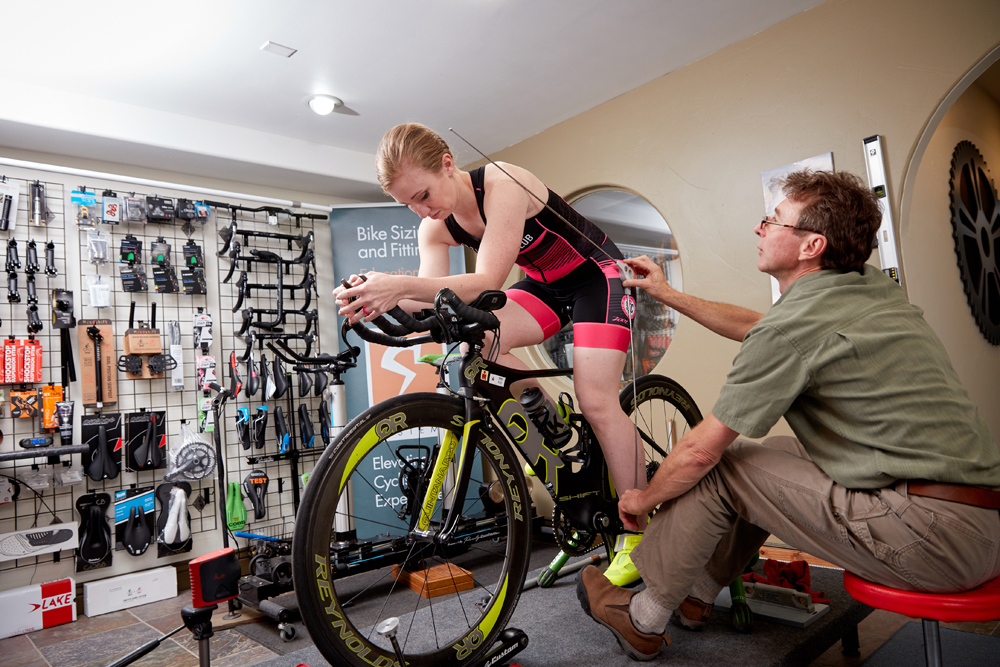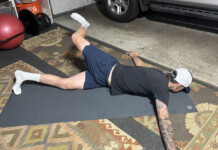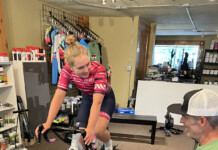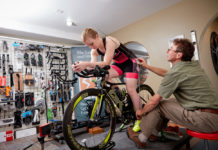By John Higgins — As a bike fitter is it quite common for a cyclist to say to me “I’m not racing, I just want to be comfortable on my bike.” Interestingly, I’ve never heard a competitive rider say to me “I’m racing and I don’t care about being comfortable”. Every cyclist regardless of participation level and ability wants a reasonable level of comfort. However, there is often confusion as to what realistic expectations are when the word comfort is used together with the word cycling. Are they at odds, or can these two C words co-exist?

Historical stories and images of cyclists have often conveyed a subtext of hardship and suffering. To be a “real cyclist” was to embrace the art of suffering and to endure the associated physical aches and pains. This perception that “cycling = suffering” has permeated common cultural understandings of what it is to be a cyclist. Novice cyclists often report that they thought having body parts hurt was an intrinsic aspect of the sport. The historical perception is not without a basis in the reality of the times, but those times are not these times, and cycling is no longer the sole purvey of the hardcore athletic aspirant. Cycling is participated in by men, women, and children across a wider age range than probably any sport other than swimming. This would not be the case if cycling was intrinsically and necessarily uncomfortable.
But what does the word comfort mean in the context of cycling? Let’s start with what it is not. Cycling in comfort is not analogous to kicking back in a recliner streaming your favorite Netflix series with a cold beverage and plate of snacks at hand. Or dozing off in a gently swaying hammock. Being comfortable is not the same as being relaxed and exerting the smallest possible amount of effort. Cycling is a physical activity requiring a blend of skill, muscular strength and movement, and cardio-vascular exertion. Comfort in this context is the absence of discomfort. Discomfort includes aches or pains resulting from a poor position detracting from the quality of your postural and bio-mechanical function, or equipment selection and set up that causes chafing, undue pressure, loss of sensation, or tissue irritation at any of the touch points on a bike.
These are completely different issues from a self-imposed fatigue due to the physical exertion required to ride a bike, and this is where confusion can arise. If you use cycling to push your mental and physical limits, then it’s realistic to expect discomforts, but this should primarily be from exertion and fatigue. If you are doing a challenging event like the Crusher, Lotoja, Wasatch All-road, Leadville 100 or an IronMan, your butt and back are probably going to be less than overjoyed with the experience. However, any back, butt, neck, feet, or hand pain should be low on the scale compared to overall fatigue.
As a general guideline, cyclists will perform better when not distracted by discomfort, and this applies equally to novices, weekend warriors, and pros. If you are fidgeting around on a bike; keep thinking there must be a better saddle out there; get numb hands or feet; or suffer back, neck or knee aches, then you are experiencing discomfort. These will detract from your mental and emotional enjoyment of the sport, as well as your physical performance. It is a completely reasonable expectation for any cyclist to be comfortable riding, by which I mean not enduring preventable discomfort.
Environmental discomforts from adverse weather conditions are in a whole different category with different management protocols. It is easy to become miserable if you are riding in conditions too hot, humid, wet, cold, or windy – but that is not unique to cycling.
What is unique to cycling is that it is a sustained interaction of human and machine reliant on pelvic supported lower limb locomotion. You probably haven’t heard it described that way before, but you know what I mean. No other sport features this combination of attributes, and as a consequence cycling in comfort presents unusual conditions and challenges. Although individuals vary widely in their sensitivity to, and tolerance of discomfort, being able to cycle comfortably is a thing, and should be for you. Enjoy your riding.
John Higgins is a professional bike fitter and purveyor of unique and boutique bicycles and fit-related components and accessories in Salt Lake City. More info on bikefitr.com







